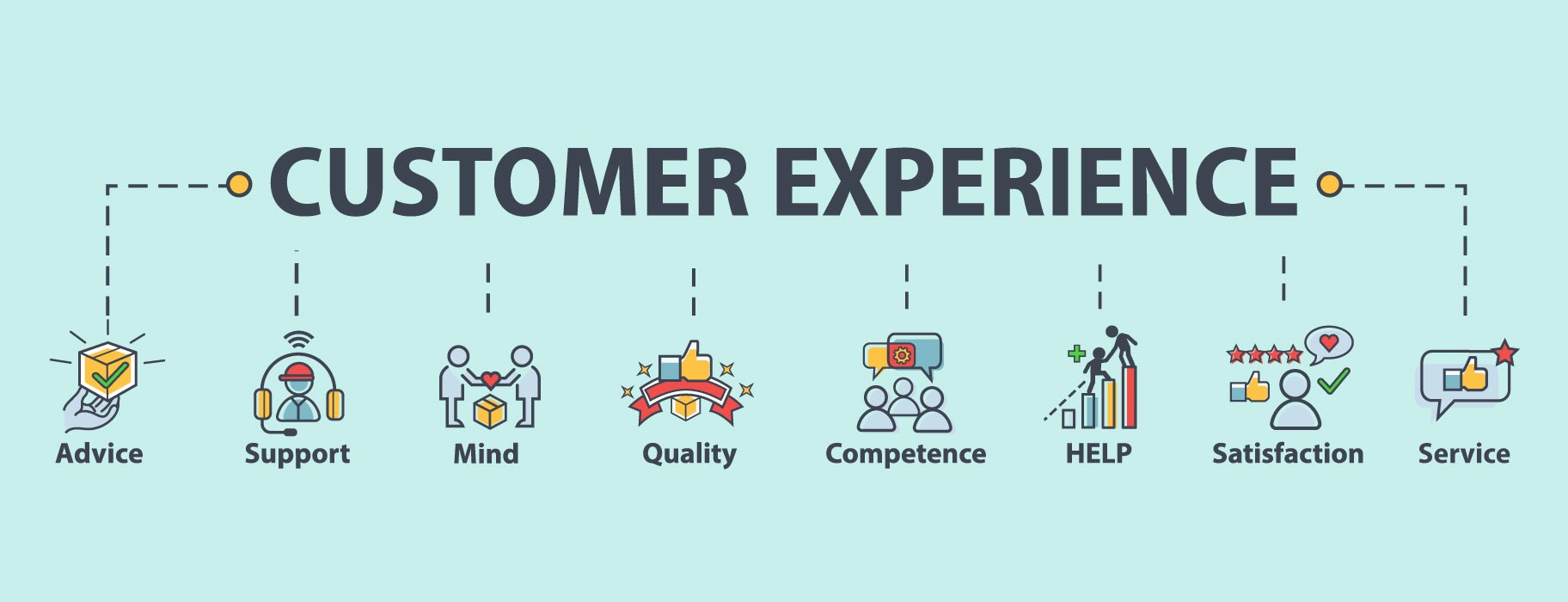Remember McDonald’s campaign create your taste on self-ordering kiosk went absolute sensation in 2016?
We all acknowledge that McD has always been obsessed with replacing employees with electronic kiosks ever since the internet was not even a fad, but what made them consider this option with so much heart into it?
Well, it was way more than empowering customers to create their own tastes.
Apart from adding sophisticated features to their ambiance and letting customers satisfy their own taste buds, the campaign was primarily aiming to prune down the queue time for customers.
And it seemed to work for the hungry customers who had to wait during the main meals of the day.
The move gunned down two problems at one go and has supposedly increased sales by 6.2% as of now.
But was all the risk worth such extravagant changes— the changes which could have backfired?
It certainly was worth every penny for the company, and you can put all the responsibility on one of the powerful terms in the industry— customer experience.
McDonald’s was viewing the store experience from its customers’ perspective.
It tried to evaluate the emotions of junkies, and that compelled it to respond to such an annoying experience.
Henceforth, it upgraded the store ambiance for bloating overall customer experience, and that should be your objective for your business too.
The concept of customer experience stays, irrespective of the business…
The concept of customer-experience is ubiquitous as it influences the way any business flourish.
Whether you own an e-commerce platform or manage a brick and mortar business, a media channel, or a grocery store— you have to provide an excellent customer experience.
Mounting an umbrella on a grocery lorry for preventing customers from heatstroke to offering a glass of water in your furniture store— everything you do while keeping your customers in mind leads to better customer experience.

So, what’s the actual definition of customer experience?
It’s tough to give an absolute definition of it; however, you can call it “the overall involvement of the customers at each level of interaction with your business.”
A customer can be positively or negatively involved with your business, and that results in good and bad customer experience, respectively.
Take your example— if you would be asked about your recently felt rich experience, you don’t really have to run into the memory lanes to recall it.
Into the first few seconds, and you can easily remember which brand left a lasting impression or which business made you feel happy, excited, and satisfied.
And no price for guessing, you will feel more homely while dealing with these brands and will continue to keep coming for filling your requisites.
The same phenomenon goes for bad experiences— just in the negative direction. You’d hardly take a few seconds to recall the experiences which induced anger, aggression, fear, frustration, or any other dull emotion.
And henceforth, you will barely take notice of these brands moving forward, and the buyer-seller vibe is likely to drain down into the gutter.
In simpler words, you can plot customer experience on a number scale where the left side of the “neutral experience” is all about the negative emotions, and the right-hand side of the range shows positive leaning towards the brand.
For customers, the seamless experience has become easy to feel— because “the feeling exists,” if not from you, then your competitor.
Hence, they expect brands to sprinkle CX at each level of their businesses these days.
For them, what goes against their expectations is a bad CX, and what suffices their needs is a good CX.
The pathway to customer experience glory...
If you ask if there’s a specific set of rules to follow or to ride on an already developed pathway to bring customer-experience into fruition, it’s a big no.
It’s because everything you do with your business evokes a certain kind of customer emotion, and you never know what could hit the right chord.
Customer experience is more about trying several permutations and combinations and analyzing what fits the best for you and your customers.
Since CX methods are not hardwired and rely more on emotions, they are relatively difficult to analyze in comparison to other metrics.
However, you can use customer experience metrics to understand customer satisfaction and loyalty.
Here’re some of the proven track records of customer-experience for generating revenues, which sum up all the more reason for your business to work on it as early as possible.
Key takeaways for your business
As customer experience has the potency to change the outlook of customers towards your brand, you gotta roll your eyes to find critical takeaways of a good CX. Here are a few of them:
- Customers feel found
Customers need recognition while they are dealing with your brand. They don’t want to feel lost amidst thousands of customers. Customer-centric approaches ensure that your customers feel found. - Customer loyalty is the by-product
Though the main motive of a good customer experience is to drop an impression at that particular moment of surfing, it rewards customer loyalty as the by-product. - The word of mouth advocacy
Customer-experience is a vicious loop. The more you work for your customers, the more they will work for you— without being too rude on your bank balance. And that behaves as a gateway for new customers. - Caters instant gratification
Since current generation customers can’t tolerate delay in experiencing pleasure, a good CX keeps their desires in check. As they have plenty of options to choose from, you don’t really have the window to ignore CX.
Okay! Now assuming that you have worked on the CX, how do you find if it’s really working for your brand or not?
As mentioned, the organizations have been searching for efficient methods to measure customer emotions and involvement with them for decades.
The question brings us to the use of management metrics/tools which are globally accepted.
And to name a few, Net Promoter Score (NPS) & Customer Satisfaction (CSAT) are some of the finest active tools to measure the customer experience.
Keep scrolling down if you are willing to read the intent of your customers towards your business.
Net Promoter Score— measuring what's in the minds of the customers.
After condensed efforts of many companies to settle upon the perfect metric system, you can finally say that NPS will answer the search for almost two-thirds of the global companies.
NPS— Net Promoter Score— is a method that segregates promoters with detractors.
Didn't get it?
Usually, you can't tell which customer is likely to promote your brand and which will have negative words for it.
That's where NPS dives to take the onus and divorces promoters with detractors.
But why has NPS seeped as the most accepted form of CX metric in the world?

Here are two reasons:
It possesses massive potency in gathering insightful data without harassing customers. (it's relatively easy for customers to understand)
It's very easy for companies to track and formulate new campaigns based on it.
Basically, NPS is about drawing the fine line between customer's likeability and contempt towards your brand— whether they will return to you in future— whether they'd recommend your business to their inner and outer circles.
The USP of NPS is that you can even set it up for your business right now, in a few seconds.
You just have to create a set of questions, put a scale below (0-10/or of your choice), and there you are— good to go ahead with the CX survey.
Calculating the NPS score is even easier than setting it up.
- Start jotting down all the responses.
- Put all the responses in the detractor list when they sail between 1 to 6— this group didn't have a satisfying experience. It is likely to set a negative brand image.
- Forward the names to the promoter list when the response records between 9 and 10. It has to be your favorite list. It had a pretty satisfying experience.
- Record 7 to 8 responses in the tentative passive list. This list is tentative about the experience. They may or may not recommend you.
- Calculate NPS by subtracting the percentage of detractors from the percentage of promoters.

You'd like to arrange questions like "how was the customer experience" or "how likely would you recommend our brand to your friends and relatives" on a number scale to gauge the core experience of the customers.
You can also ask about your service or product to dive deep and look for the bigger picture for word of mouth marketing strategies.
As NPS turns out as the best anchor for managing customer experience, you can complement these insights at different levels of the business to have inclusive details of the customers' interaction.
Customer Satisfaction (CSAT)— the stars which matter
You must have rated stars on Facebook pages and Amazon products.
Each star tells about your proclivity towards that page or product.
In layman’s— every star speaks volumes about your satisfaction index, and the metric is customer satisfaction (CSAT).
You can deploy the same metric when it comes to analyzing customers linked with your business.
Akin to NPS, CSAT also enjoys a unique position in evaluating customer’s interest in your brand, thereby acting as one of the most deployed CX metrics.
Similar to NPS, companies can create CSAT real quick, and customers can easily comprehend it.
You can use this technique effectively to find one-time interaction satisfaction, which includes cases like web booking or transaction.
While NPS and CSAT continue to dominate the CX metric, other methods such as Customer Effort Score, Customer Churn Rate, and Customer Lifetime Value can also help you reap different sects of information.
The reason for choosing these metrics should be based on the kind of information you’ve been seeking for.
The final verdict
Customers follow a simple philosophy.
“If it’s not you, then it won’t be you.”
It means that if you aren’t able to give what the customers want, they won’t choose you. If it’s not you who’s not providing the rich-experience, they won’t pick you as their preferred option.
So, customer-experience is no more a choice for you— we have moved far away from ifs and buts of it.
It’s either you have a vivid customer-experience, or you fall short of the competitors in your industry.
So, how has customer-experience worked for you? Or how do you measure customer satisfaction and loyalty?









